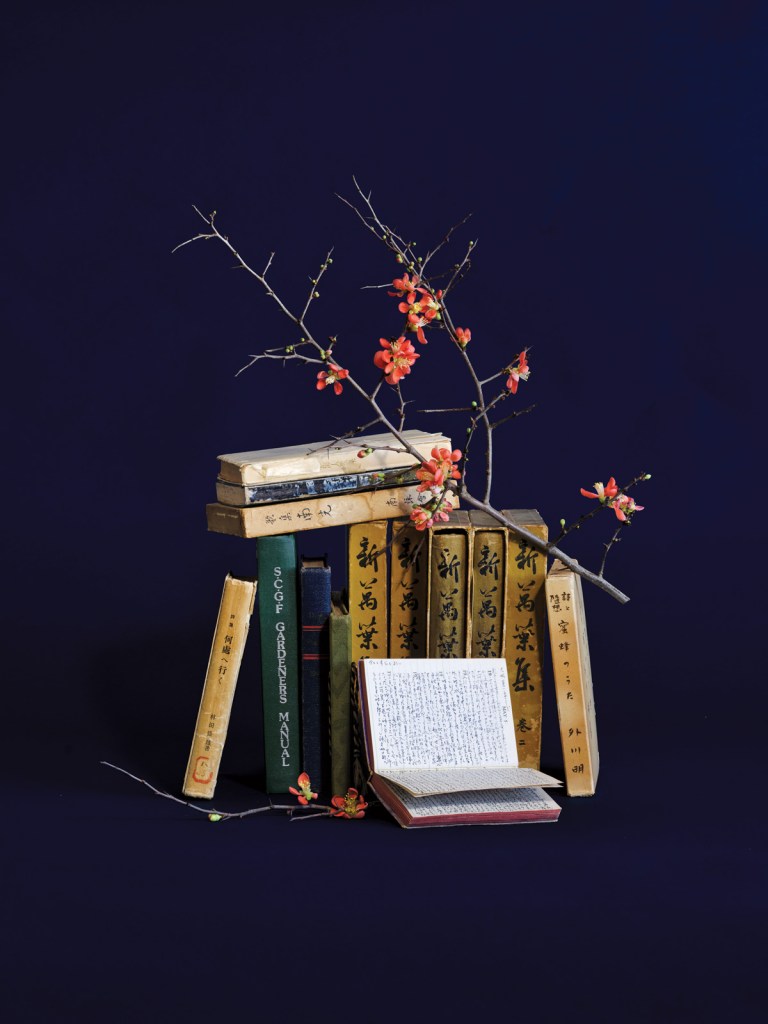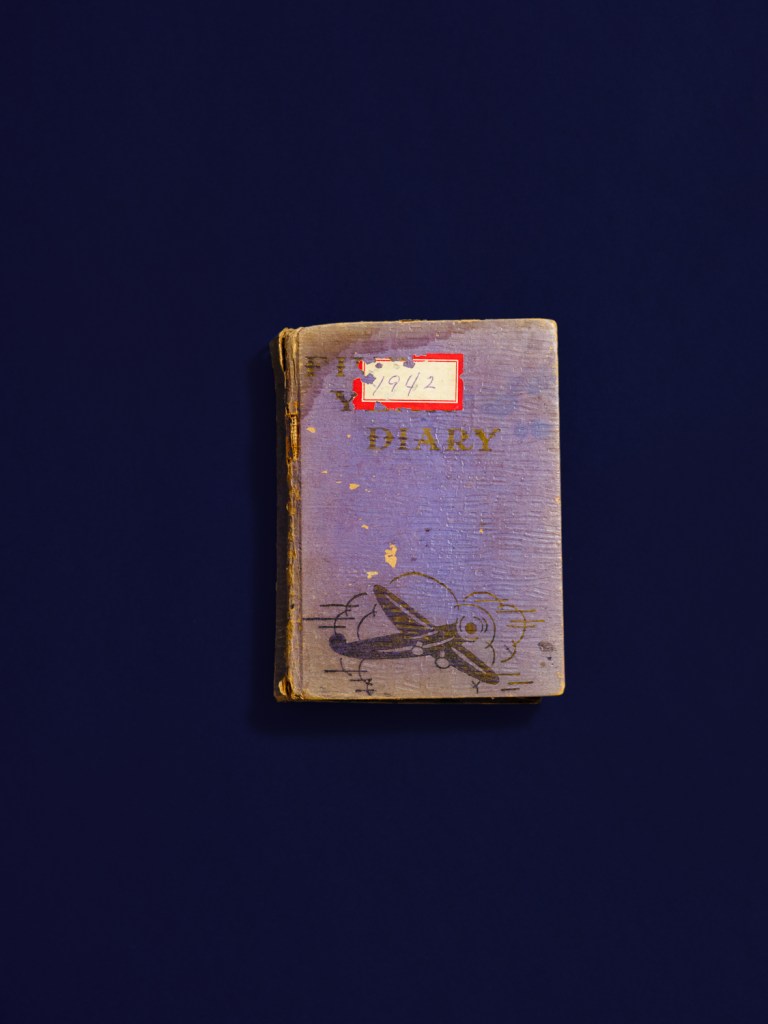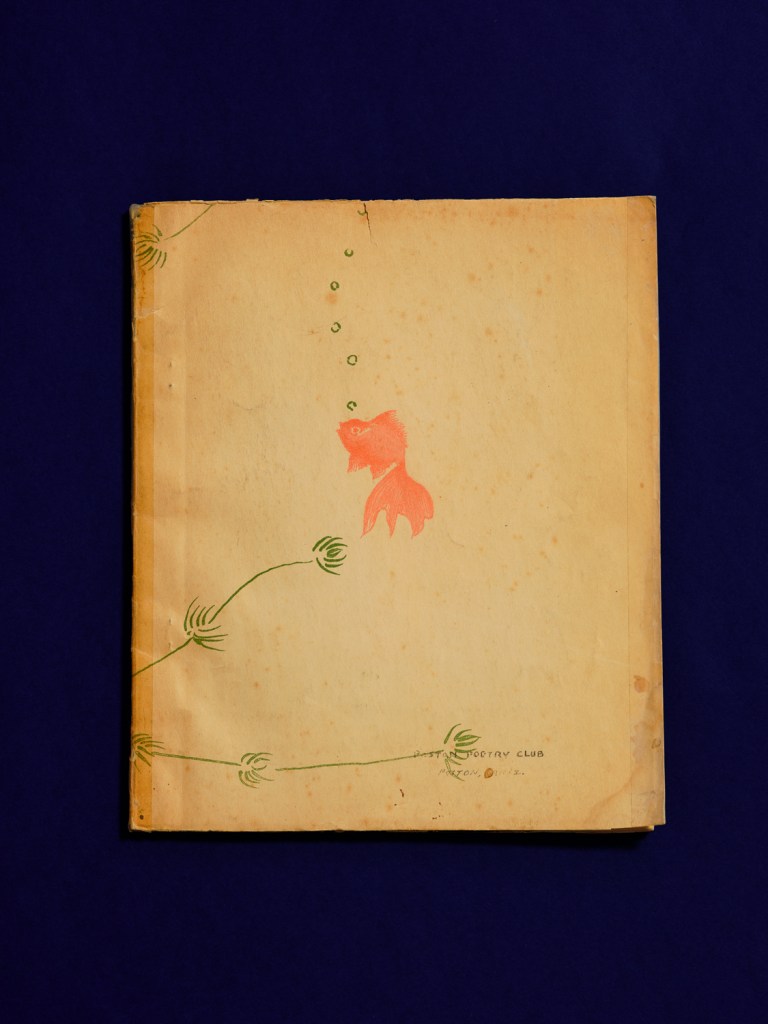Why do I suffer
spring rain wind lightning
like a scarecrow
listless
in this cold twilight
I, an immigrant child
—Morio Hayashida, from “Immigrant Child,” in Where to Go, Los Angeles (trans. Andrew Leong and Lisa Hofmann-Kuroda), 1928
SEVENTEEN-YEAR-OLD Morio Hayashida stepped off the Japanese ship Shinyo Maru into San Pedro, California, in late 1921. Seven years later, while living in Los Angeles, he published a 220-page collection of Japanese-language poems, (Where to Go). Hayashida was part of a literary community of Issei (first-generation) immigrants — educated, aware of Japanese modernist literary trends, and firmly rooted in life in the United States.
Few Americans realize that between the world wars, there was a flowering of Japanese-language literature in the U.S. The Issei brought their love of poetry to the Western U.S., establishing living-room literary clubs in Los Angeles and other West Coast cities and publishing literary journals and poetry collections. As they lived and worked in the U.S., they began to create a distinctly Japanese American aesthetic, forged from daily experience.
The day-to-day reality of being a Japanese immigrant in a hostile country — with its melancholy, alienation and ambivalence — forms an important subtext to Hayashida’s Where to Go.
In late 2020, as the pandemic was bringing the world to a halt, Hirokazu Kosaka, master artist in residence at the Japanese American Community and Cultural Center, introduced me to his collection of pre-war Japanese-language poetry books written by Issei in LA. These rare books — and hundreds more in his garage — had never been translated. His grandfather, Hayashida, also left behind boxes of handwritten manuscripts and meticulously written diaries.
Over the coming months, as I translated bits and pieces, the collection’s value became clear. For the Japanese American community and the Issei’s descendants, few of whom read or understand Japanese, it’s a chance to learn what their grandparents’ and great-grandparents’ lives were like and discover that their relatives were artists with rich innerlives. For scholars, it is an opportunity to reach back to the first generation of Japanese American poets. Studies of Asian American literature usually begin with the first generation writing in English, so that the entire previous generation is missing.
As Andrew Leong, a leading scholar of Japanese-language Japanese American literature, put it: “Many copies of these journals and anthologies were thought to be lost over the course of the World War II incarceration of Japanese Americans; their preservation by the JACCC is a small miracle.”
The interwar period in the U.S. was a time of vehement anti-Asian politics, coming on the heels of a different pandemic, the Spanish Flu (1918-’20). In 1875, 1882, 1907 and 1924, successive federal acts and agreements slowed and then halted migration from Asia. Ozawa v. U.S. (1922) denied citizenship to Issei or first-generation Japanese immigrants. Alien Land Laws were passed in California (1913, 1920) and other states, prohibiting “aliens ineligible for citizenship” from owning land. Compounding all this was the Great Depression, starting in 1929. But despite everything, Issei writers produced poetry, stories, essays and plays, making beauty from their lives.
Like many immigrants, Hayashida had limited options. In an environment of legalized racism, people sought out the mutual support of Japantowns like Little Tokyo. The community faced two opposing pressures — the desire to assimilate and prove they belonged, and the desire to preserve Japanese culture and language. Many first-generation immigrants could not afford to return to Japan, but were legally prevented from moving forward in the U.S.
Even though Issei were writing here and their books and literary journals were published in the U.S.; even though some were directly connected to white modernist artist peers, their Japanese-language work went unrecognized, categorized as “foreign” poetry. To position their writing as “American” would bring into question the nation’s default English-centric stance.
“Many copies of these journals and anthologies were thought to be lost over the course of the World War II incarceration of Japanese Americans; their preservation by the JACCC is a small miracle.”
Still, the 1930s were a vibrant artistic period, not just for Japanese-language literature but also for photography, visual art and dance. In Los Angeles, Morio Hayashida joined Japanese literary clubs and socialized with fellow artists and pre-war modernists like writer Yone Noguchi, writer and actor Sadakichi Hartmann, artist Takehisa Yumeji and Michio Itō, a dancer. Through these networks, Issei writers explored their experiences and began to formulate a Japanese American sensibility. They wrote, published and supported each other, printing their books in Japan, since Japanese book typesetting in the U.S. was extremely limited. But most of this ended when the U.S. interned Japanese Americans in 1942.
In English-language poetry, there is some recognition that early white modernists like Ezra Pound were inspired by translated Japanese and Chinese poetry and by writers, such as Yone Noguchi, who circulated in bohemian circles. Issei poets brought the strands of Japanese and American modernism together, departing from classical Japanese poetry and experimenting with free verse.
At the same time, they also drew on classical forms to write about their day-to-day experiences in Japanese. The Southern California Gardeners’ Federation regularly published senryu by gardeners who tended the yards of Los Angeles’ wealthy. Senryu poems are similar to haiku in structure, but emphasize everyday human life, often with cynical humor — perfect for recording frustrations and struggles.

White, black, and yellow gardeners glared at each other as they competed for the same job.
—from Gardeners’ Pioneer Story, Los Angeles (trans. Sunny Seki)
The land we developed was owned by others.
—from Gardeners’ Pioneer Story
Current political events caused the number of white customers to decrease.
—from Gardeners’ Pioneer Story
Traditional haiku, with its seasonal and nature references, lent itself to the West Coast’s flora.
Round, moonlit night, zebra grass heads all lined up
—Toshiyuki “Boshichō§ Okamura, from Torch, Los Angeles (trans. Kenji Liu), 1933
When the grass withers, the cactus needles look sharper
—Sekitani Hourou, from Torch, Los Angeles (trans. Kenji Liu), 1933
And Issei poets wrote about everyday life on the West Coast, using imagery that could only spring from here.
The corn’s lower leaves are yellowing, smell of burning tortilla
—Handa Setsuyu, from Torch, Los Angeles (trans. Kenji Liu), 1933
The anthology Torch (1933), written in commemoration of the 1932 Los Angeles Summer Olympics, offers insight into the international effort it took for the Issei to publish their work. Several poetry coteries contributed, from LA, the West Coast and Japan. Japanese-language poetry, with its sometimes esoteric language or use of obscure Chinese characters, required a robust set of typographic characters not available here. Though the publisher, Agosto-sha, had an address in Little Tokyo, the printer was in Tokyo.
The anthology also offers insight into the politics of the time. Japan, following its victories in World War I, had turned toward imperialism and colonization. The nationalism of the Olympics hung over its athletes, some of whom were colonial subjects from Korea. Some Issei attending the Olympics grew misty-eyed with nationalism.
Olympics
When the Japanese flag rises, a flood of tears
—Sato Ichimizu, from Torch, Los Angeles (trans. Kenji Liu), 1933
Hayashida contributed one poem to Torch:
Street of Lights
Linger on a bridge on a street of lights
Cast a tired evening eye on a spider web
Under the palm tree’s shade, a bento spread in the breeze
Run around after a child on fresh green
In the shade with shoes off, a nap with singing insects
Everyone quiet in the grapevine trellis, evening wind
Through the tunnel, again the tiring tunnel
Taken by the wind, look at that hat
—Morio Hayashida, from Torch, Los Angeles (trans. Kenji Liu), 1933




Eventually, the forced eviction of Japanese Americans to desolate concentration camps stifled most literary activity in Japanese. Assimilation became preferred. Japanese-language Issei writing was lost to the next generation’s coming of age; the Nisei (second generation) generally wrote in English. Issei notebooks of handwritten kanji compositions were packed away in suitcases and left in attics or basements. Many Nisei could not read them anyway.
The significance of Hayashida’s Where to Go is multifold. In the context of American poetry between the world wars, it is an avant garde poetics, unknown to most. It reveals a unique slice of first-generation Japanese immigrant life in the U.S. during a time of great hostility. It represents the labor and support of the Japanese American literary community and the transnational connections that facilitated its publication. It challenges language, nation and race-based assumptions about what counts as American literature.
Despite anti-Asian attitudes (and sometimes because of them), Issei writers sparked a flowering of poetry and literature that we are now just starting to recover. Today, we understand more clearly that many Issei artists — writers, photographers, dancers and sculptors drawing on Japanese and European modernism — were experimenting in ways that were ahead of their white counterparts, even as white writers and artists drew direct inspiration from Japanese artists. Issei writers who could mix with the white bohemian set were crucial to the spread of Japanese poetry. We need to make this more visible, to challenge the idea that a white artist’s singular work breaks from tradition through the genius of the creator.
Today, we understand more clearly that many Issei artists — were experimenting in ways that were ahead of their white counterparts.
Hayashida remained active in LA’s Nikkei community, working as a gardener, leading the Southern California Gardeners’ Federation and helping to establish a community bank. After his death in 1993, his papers passed to his grandson, Hirokazu Kosaka.
Today, Japanese poetry written by the Issei is being translated more actively as more heritage speakers and translators turn their attention to previously inaccessible work. Much of the focused is on work written for the internment camps’ literary magazines. JACCC’s effort, which seeks to digitize a large portion of the collection and make it available online, is one of the only efforts to examine prewar literature. Its importance cannot be overstated; a collection previously lost to war, racism and the language barrier has become a bridge back to the first generation.
Now, scholars can trace transnational networks of creative influence and question the dominant narratives about U.S. literature. The Japanese American community is reconnecting with its grandparents and great-grandparents (a connection often broken because of the language barrier, the camps and generational trauma). And present-day communities under attack can now look to these Issei creators for inspiration and affirmation — a vivid reminder that, even under the most challenging conditions, it is possible, and necessary, to make art.
We welcome reader letters. Email High Country News at editor@hcn.org or submit a letter to the editor. See our letters to the editor policy.
This article appeared in the March 2024 print edition of the magazine with the headline “Taken by the wind.”


